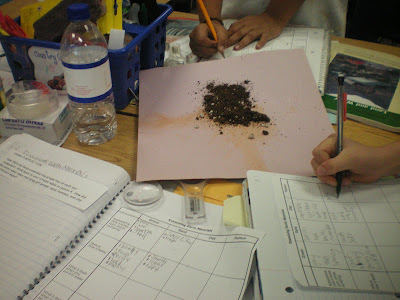In Writer's Workshop, students are finishing up their rough drafts. Each day they are revising their stories with the help of a writing buddy. In order to make sure their story is made up of scenes they need to include snapshots (imagery/show, don't tell), thoughtshots (their character thinking in their head/telling), dialogue (characters talking to one another), and establish the setting for each part of their story.
When writing buddies meet they first swap writing papers and fill out the Creating Scenes Peer Checklist. For each category they give 5-1 score and have to include one example they saw for each category. (This way they are being held accountable).
5 = just the right amount to create a scene
3 = needs a little more
1 = not included
Then each author takes their own rough draft back to their writing spot and begins revising their story, based on the checklist feedback. Finally they fill out the Creating Scenes Self Checklist. We have been very pleased at how independent each student is during Writer's Workshop!

We are continuing to learn about the historical fiction genre though novel discussion groups, independent reading, and read alouds. This week the class is listening to the story Dandelions by Eve Bunting. As they are listening to the read aloud on the carpet they are completing a T-chart in their notebooks. Students are listing the real information from this time period (such as people had to travel in a covered wagon) to what the author has included to make the story interesting (characters).
































































